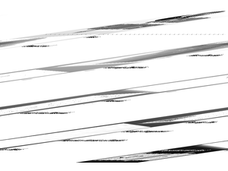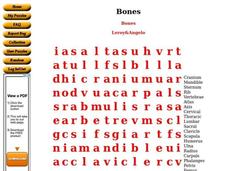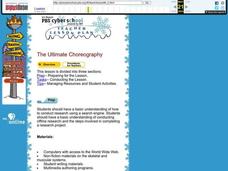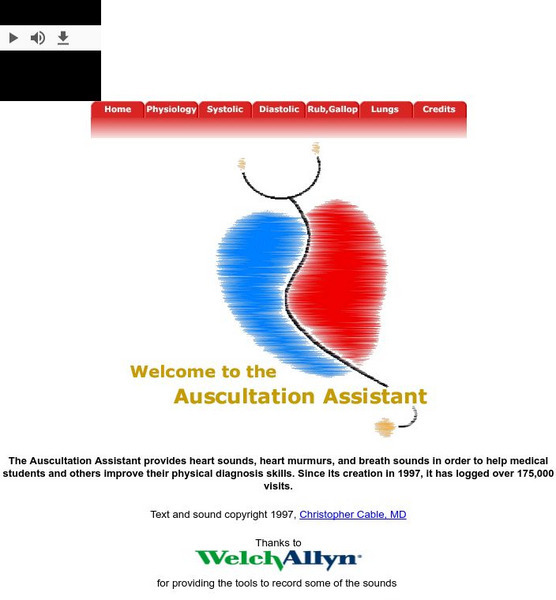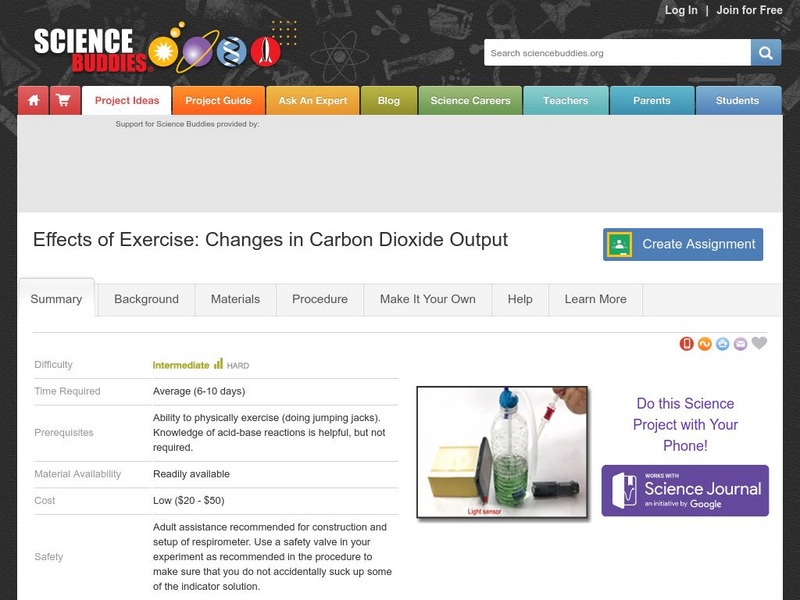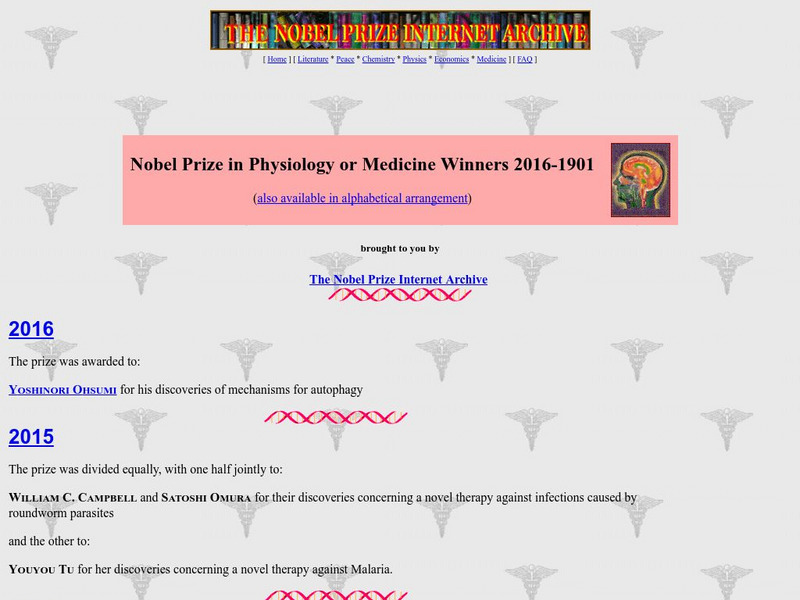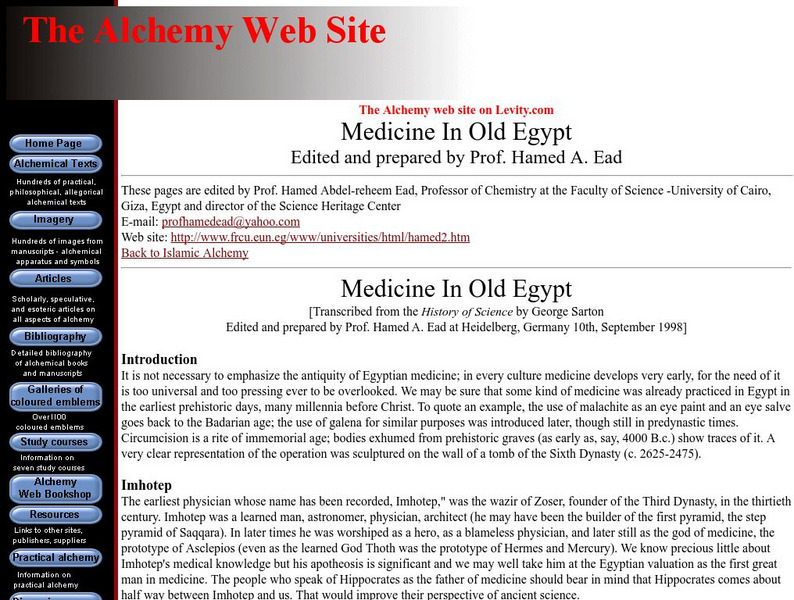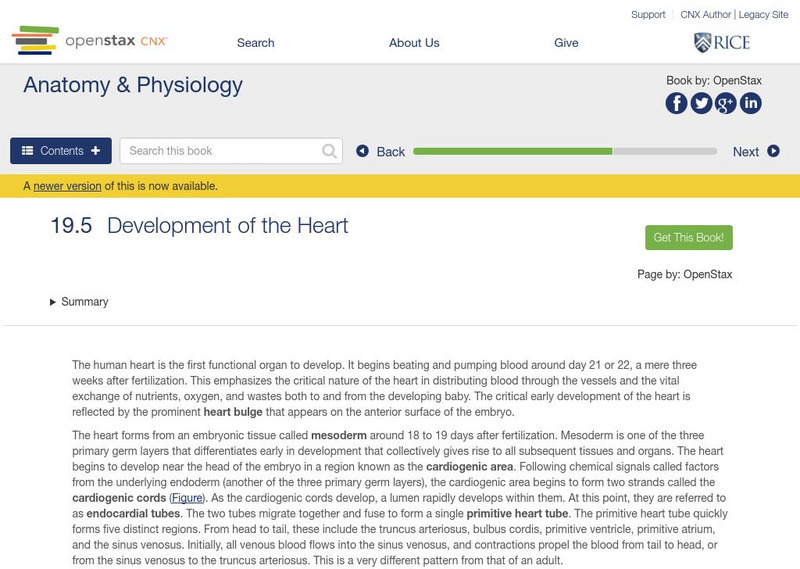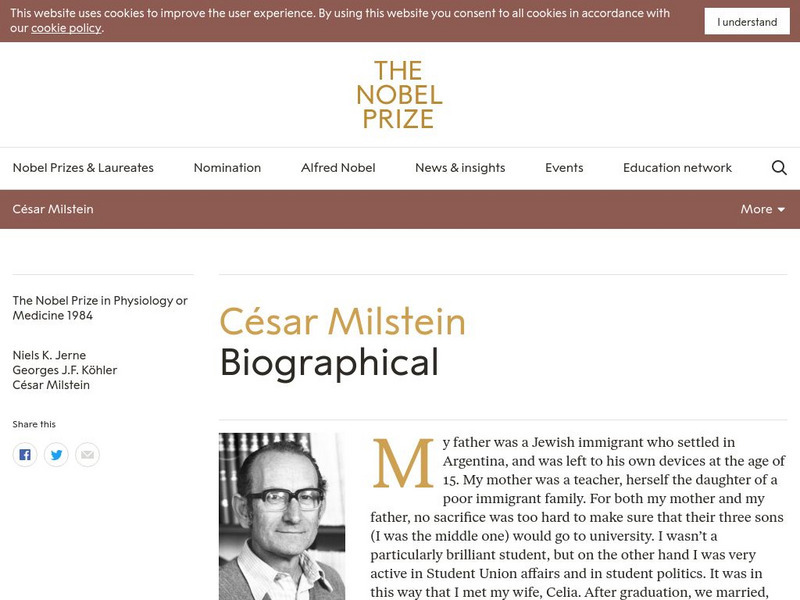Curated OER
Breezy, Chilly, or Freezing?
Students assess the factors which influence the sensation of being "cold" in a particular situation. They study the complexities in measuring temperature by reading and discussing the article "Beyond Brrr: The Elusive Science of...
Curated OER
Term Paths
Students follow several pathways using anatomical directions on a simulated "body" produced from a copy of a school building's fire evacuation plan.
Curated OER
Anatomy and Physiology
Students explore anatomy and physiology using various activities. In this biology lesson plan, students reasearch about medical radiation and its applications. They study cell cycle, cell division and other processes that sustain life.
Curated OER
Now, Take a Deep Breath
Students define several laws of pressure and see how they relate to scuba diving. In this ocean explorer lesson students answer questions and complete an activity.
Curated OER
Bones
In this health worksheet, students find the names of the bones and the answers are accessed by clicking the link at the bottom of the page.
Curated OER
Water Regulation
Students use their basic knowledge of physiology to analyze graphical data of paramecia under diverse conditions. From the data analysis, Students develop explanations of the animal's response to the concentration of different solutions...
Curated OER
Health: How's Your Heart?
Students examine human physiology by measuring heart rates and conditions that influence them. To determine the difference in heart rates, they take their pulses at rest and after jogging in place. Once the data is collected, students...
Curated OER
Effect of Acid Rain on Plants
Students observe the effects of acid rain on plants through experimentation and research. Students research types of crops in their area. Students work in small groups to complete the experiments given, as well as write a report and...
Curated OER
Kirk Medical School
Fifth graders conduct research on the major organ systems of the human body. They create and present 3D models of a body system, and collect basic first-aid supplies for donation to a third-world community.
Curated OER
The Ultimate Choreography
Eighth graders research the required elements of the short programs in men's and women's figure skating. They analyze the physical requirements of each move and relate the types of muscles, bones, and joints required to perform them.
PBS
Pbs Learning Media: Amazing Heart Facts
This feature from the NOVA: "Cut to the Heart" highlights facts about the heart, including its size and placement, and will help you to understand the importance of this wondrous organ in our bodies.
University of California
The Auscultation Assistant
Designed for medical students, this site gives a detailed description of the sounds of the heart and lungs, including disorders, while playing read audio of those sounds with each description. Suitable for upper level high school...
Science Buddies
Science Buddies: Effects of Exercise: Changes in Carbon Dioxide Output
Everybody knows that your body needs oxygen to keep going, and that you breathe out carbon dioxide as waste. What happens when you exercise? You've probably noticed that you breathe faster, and your heart beats faster. What triggers your...
Other
Nobel Prize in Physiology or Medicine Winners 2008 1901
A list of the Nobel Prize winners in Physiology or Medicine (updated yearly). Click on the names for more information.
Other
Washington University: Hemoglobin and the Heme Group:
This site from the Department of Chemistry at the Washington University provides a deetailed study of the role of hemoglobin in blood physiology. The article is somewhat in-depth, complete with pictures, charts, and a bibliography.
Other
University of Cairo: Medicine in Old Egypt
Details evidence from the Smith papyrus and the Ebers papyrus in order to provide an idea of the knowledge of medicine, anatomy, and physiology of the ancient Egyptians.
Exploratorium
Exploratorium: Microscope Imaging Station: Classroom Explorations
These microscope activities provide students with lots to explore. Activities include the characteristics of living things, math in science, cell biology, genetics, physiology, and mitosis.
National Cancer Institute at the National Institutes of Health
Seer Training Modules: Introduction to the Human Body
Self-guided learning activity where students learn about the functions, processes, and anatomy of the human body. There is a short quiz at the end of the lesson to check for understanding.
OpenStax
Open Stax: Anatomy & Physiology: Cardiac Muscle and Electrical Activity
Students learn about cardiac muscles and the electrical activity that helps them function to pump blood throughout the body.
OpenStax
Open Stax: Anatomy & Physiology: Development of the Heart
Study the embryological development of heart structures including the five regions of the fetal heart with these learning exercises.
US National Library of Medicine
Medline Plus: Stress Echocardiography
A stress echocardiogram can help a doctor see how the heart responds to exercise. This tutorial explains how the test works and its risks and benefits.
CK-12 Foundation
Ck 12: Biology: Muscle Contraction
[Free Registration/Login may be required to access all resource tools.] Describes how muscles contract according to the sliding filament theory.
Nobel Media AB
The Nobel Prize: Cesar Milstein Biographical
Learn about the Argentinian 1984 Nobel Prize winner in physiology or medicine Cesar Milstein in this autobiography provided by the Nobel foundation.
Virginia Tech
Virginia Polytechnic Institute: Greenhouse Dinosaur Extinction Theory
This comprehensive page discusses the Asteroid Impact vs. Volcano-Greenhouse dinosaur extinction debate. It was written by paleontologist, professor, and scientist Dr. Dewey McLean.





